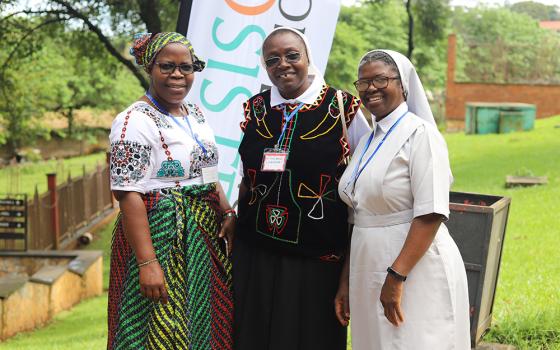
HABITS OF CHANGE: AN ORAL HISTORY OF AMERICAN NUNS
By Carol Garibaldi Rogers
Published by Oxford University Press, $27.95
“Women & Spirit: Catholic Sisters in America” is a traveling exhibit that artfully communicates significant contributions Catholic sisters have offered to those they serve in this country. Although it was not intended as such, Habits of Change: An Oral History of American Nuns is a fine companion piece. This particular text is an update and revision of an earlier book, Poverty, Chastity, and Change: Lives of Contemporary American Nuns, published in 1996. In the first edition, the author gathered 94 oral histories of women religious and subsequently published 54 of them. In the most current text, Rogers revisits the women first interviewed as well as talks to seven new interviewees, and allows us to see how their lives have evolved.
As a collector of oral histories, the author is faithful to allowing sisters to use their own words in telling their stories. Her fidelity to her task enables us to come to know many of the women she interviews in delightful ways. Many sisters speak lovingly of their early upbringing, the influence of parenting, of being part of a culture that expected and supported faith development, and of the ways in which they have had opportunities to develop their gifts. As in the first edition, attention is given to include sisters engaged in a variety of ministries as well as in several forms of religious life. Her commentaries refer to texts and events in the life of the church as well as in the life of our country that have influenced persons in consecrated life. Rogers also includes two interviews with women who chose to leave their congregations. The range of categories speaks to her integrity in endeavoring to capture the fullness of the story.
Many of the sisters questioned are engaging and highly articulate. Their stories draw the reader into their lives and leave us wanting to hear even more. Other accounts are less polished. There were a few that, other than for reasons of affection, one wonders why they were included. At the same time, the variations are indicative of the range of personalities drawn to religious life. Clearly, there is no one personality type, ministerial gift or thought pattern that constitutes a “woman religious.”
The author carefully includes material that speaks to the struggles with authority experienced by many women religious. As religious life continues to evolve within the United States, it is obvious that both leaders and members have been stretched by the dialogues about where and how women religious are called to be present. Leaders have had to make enormous decisions to support members as they sought to respond to the invitation of the Holy Spirit in their individual lives. There were times when such struggles led to breaks within congregations.
It is also clear that sisters experience struggles with the exercise of authority within our own church. More than one sister spoke of her personal frustration with liturgical celebrations that make no room for feminine gifts and for liturgical texts that make no room for inclusion. As the author states in her epilogue, “The relationship between nuns and their church during the decades since the Second Vatican Council has often been uncomfortable.”
The interviews with the two women who left consecrated life speak to their ongoing efforts to bring about change. Both women communicate gratitude to their respective congregations for the development of their own spirituality. Both women continue to be involved in ministry that permits them to use their gifts more freely.
In the epilogue, Rogers captures well the four common areas that women religious have identified as central to their lives. One can extract from the stories these values: the contemplative dimension of the lives of women religious, the belief in community, commitment to the underserved, and grounding in the Gospel. The author listened well. When all the reports from the apostolic visitation are read, one might suspect that these same four dimensions will shine through because they are so integral to the fabric of religious life.
There have been too many books written by persons who have never entered religious life that make multiple judgments on how women religious live out their commitments. Some of them are favorable. Others border on the vitriolic. This author does not succumb to either temptation. Her sincere interest in women religious kept her faithful to the listening, honest in the recording, and sensitive in the integration of her own narrative. On behalf of women religious, I can only say thank you.
[Sr. Mary Hughes is prioress of the Dominican sisters of Amityville, N.Y., and a past president of the Leadership Conference of Women Religious.]



